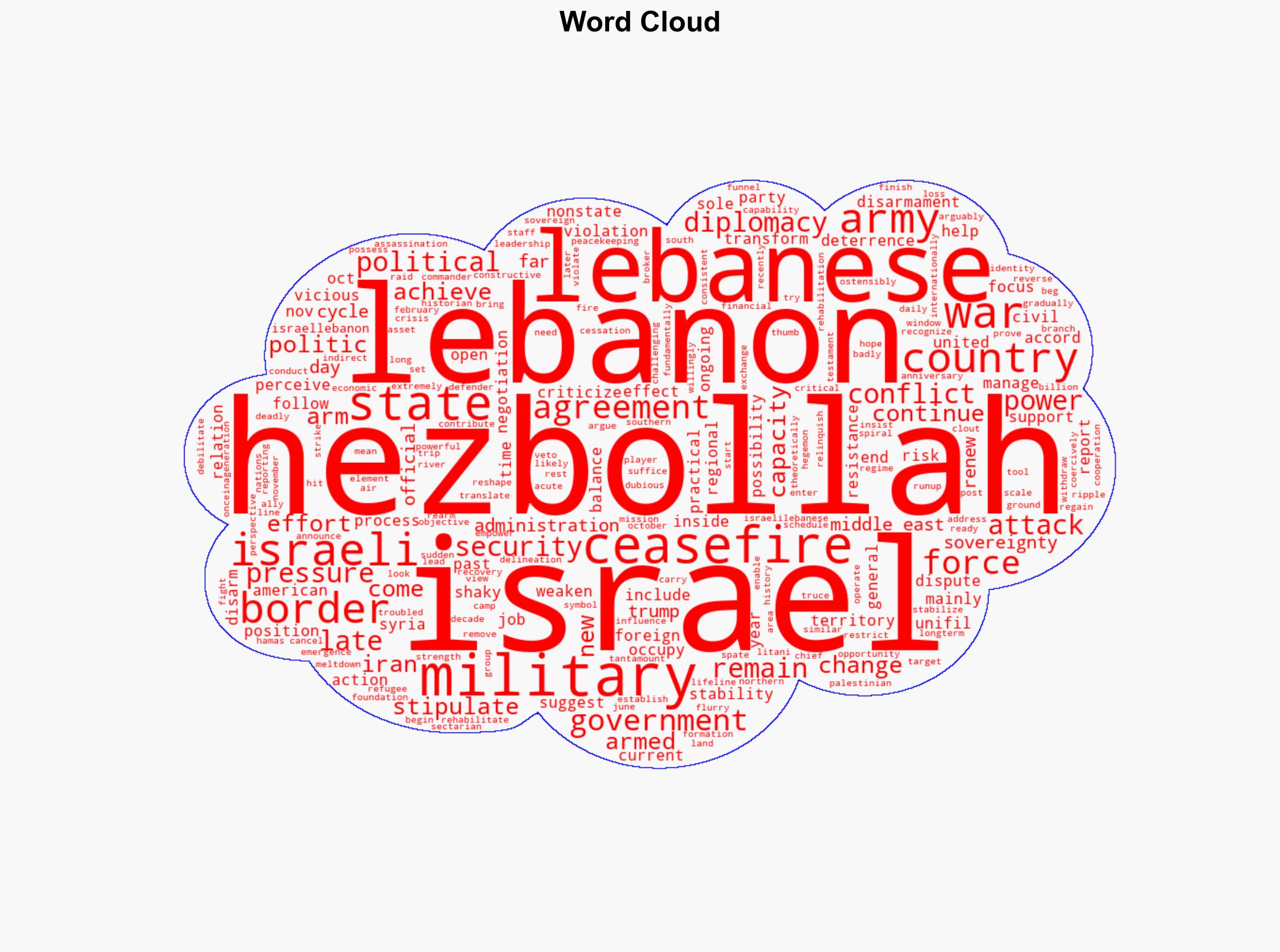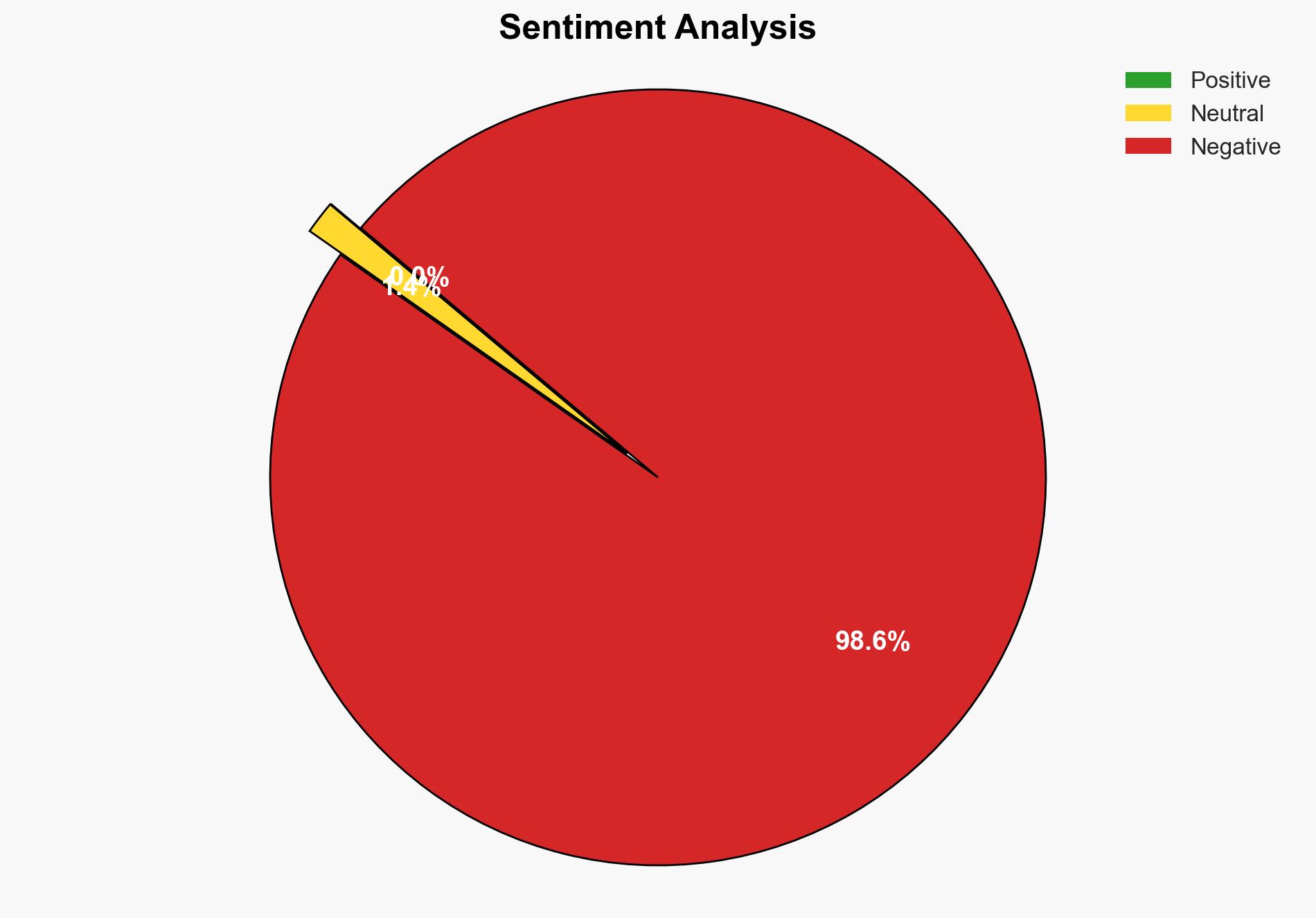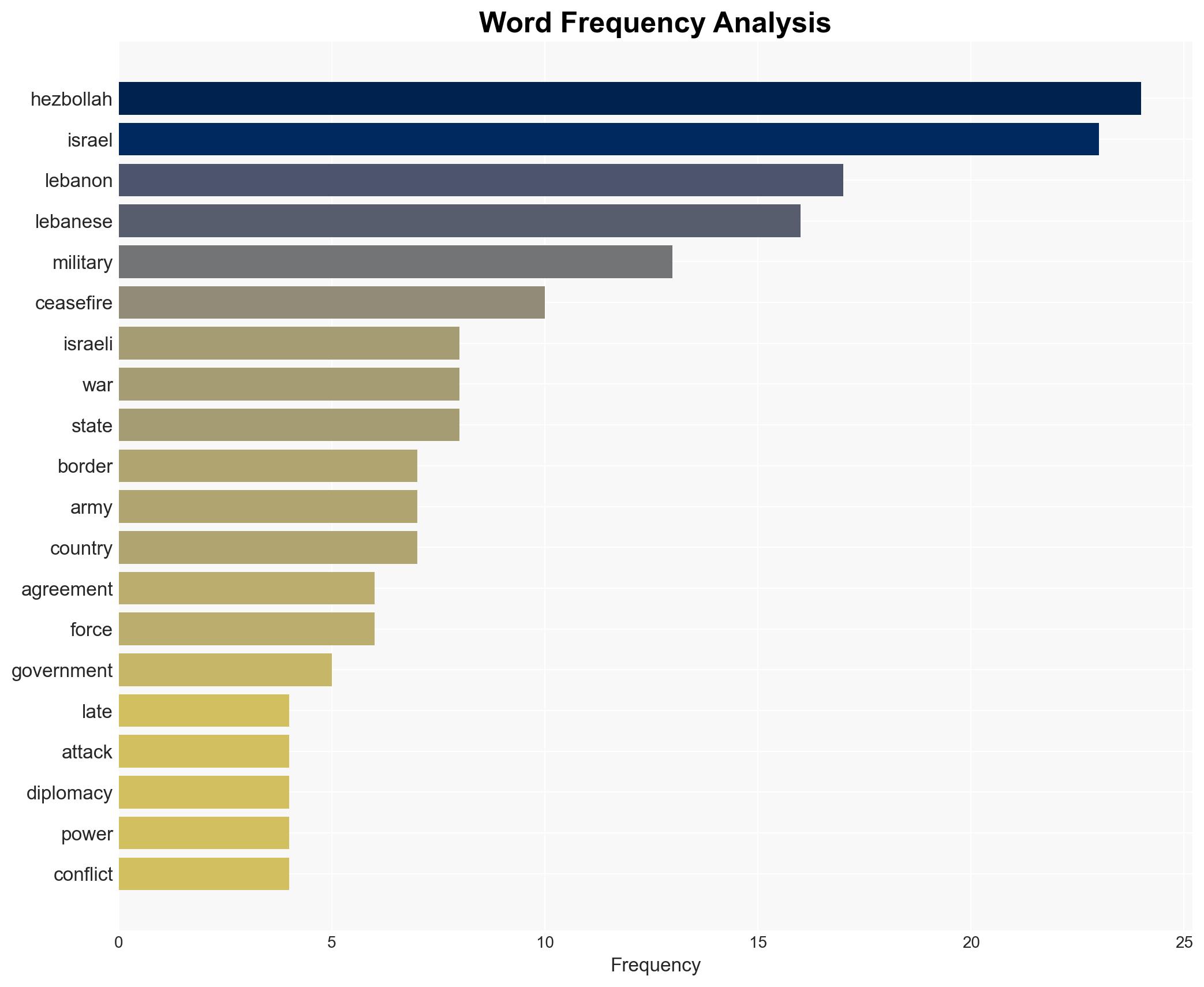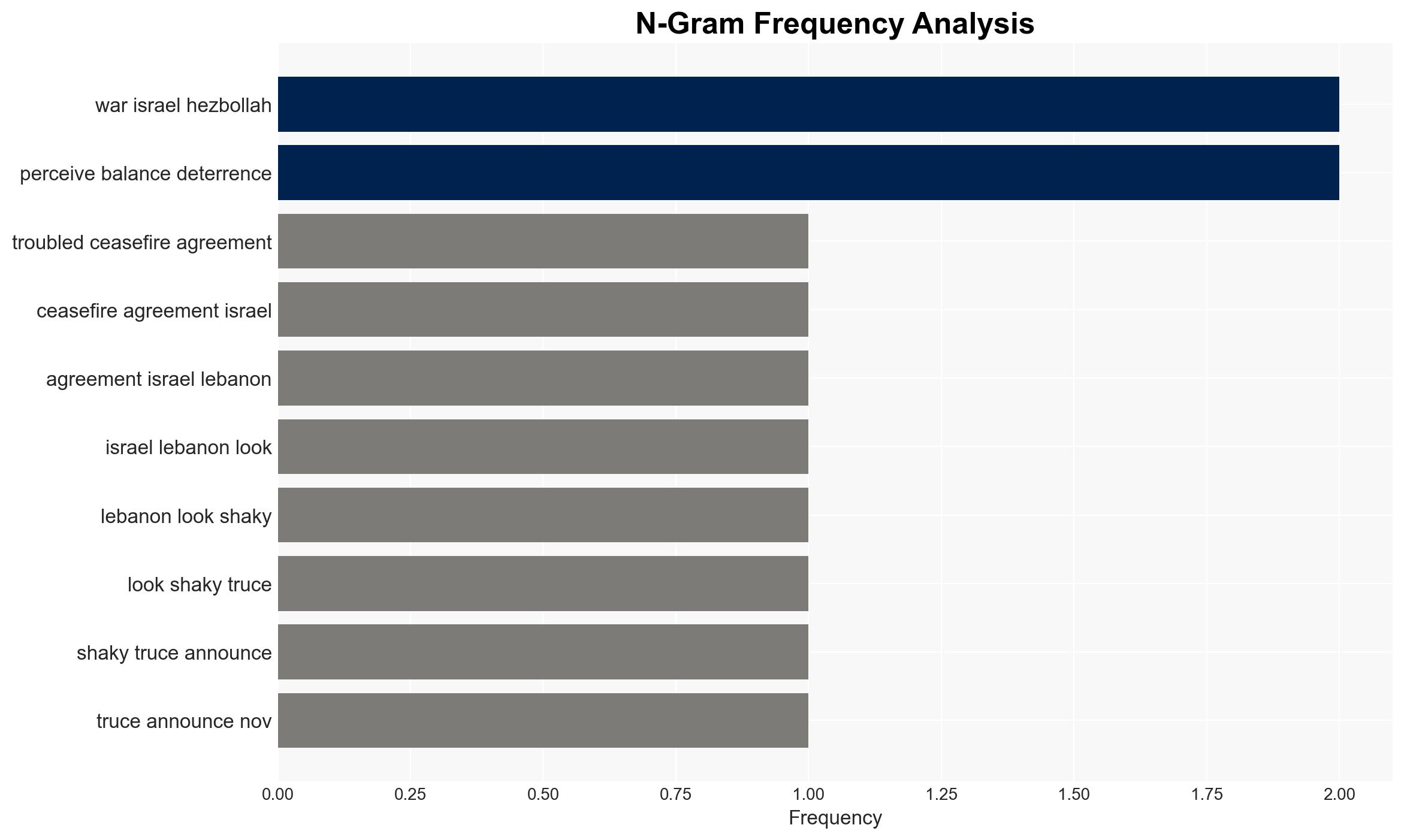Israeli-Lebanese ceasefire faces instability as tensions rise, raising fears of renewed violence
Published on: 2025-11-26
AI-powered OSINT brief from verified open sources. Automated NLP signal extraction with human verification. See our Methodology and Why WorldWideWatchers.
Intelligence Report: Israeli-Lebanese Ceasefire Fragility
1. BLUF (Bottom Line Up Front)
The Israeli-Lebanese ceasefire is increasingly fragile, with a high likelihood of returning to cyclical violence. The most supported hypothesis is that Hezbollah’s military activities and Israel’s security responses will escalate tensions, potentially leading to renewed conflict. Confidence Level: Moderate. Recommended action includes diplomatic engagement to reinforce the ceasefire and address underlying security concerns.
2. Competing Hypotheses
Hypothesis 1: The ceasefire will collapse due to escalating military actions by Hezbollah and Israeli responses. This is supported by recent Israeli strikes and Hezbollah’s military activities, indicating a deteriorating security environment.
Hypothesis 2: The ceasefire will hold due to international diplomatic efforts and internal Lebanese political dynamics, which prioritize stability and economic recovery over military escalation.
Hypothesis 1 is more likely given the current evidence of military violations and the strategic interests of both parties in maintaining military readiness.
3. Key Assumptions and Red Flags
Assumptions include the belief that Hezbollah will continue to prioritize military strength over political compromise and that Israeli security policy will remain aggressive. Red flags include the potential for miscalculation or unintended escalation, and the possibility of Hezbollah leveraging its political influence to resist disarmament efforts.
4. Implications and Strategic Risks
The primary risk is a return to armed conflict, which could destabilize the region and impact global energy markets. Politically, renewed violence could undermine Lebanese government efforts to restore sovereignty and economic stability. Cyber and informational warfare could also escalate, further complicating diplomatic resolutions.
5. Recommendations and Outlook
- Engage in multilateral diplomatic efforts to reinforce the ceasefire and address security concerns, involving key stakeholders such as the United States and UNIFIL.
- Encourage Lebanese political reforms to reduce Hezbollah’s military influence and promote state sovereignty.
- Best-case scenario: Successful diplomatic interventions stabilize the ceasefire, leading to gradual disarmament and economic recovery in Lebanon.
- Worst-case scenario: Full-scale conflict resumes, causing regional instability and humanitarian crises.
- Most-likely scenario: Continued low-level skirmishes with periodic escalations, maintaining a fragile status quo.
6. Key Individuals and Entities
Hezbollah leadership, Israeli Defense Forces (IDF), Lebanese government officials, UNIFIL representatives, U.S. diplomatic envoys.
7. Thematic Tags
National Security Threats, Middle East Stability, Military Escalation, Diplomatic Engagement
Structured Analytic Techniques Applied
- Cognitive Bias Stress Test: Expose and correct potential biases in assessments through red-teaming and structured challenge.
- Bayesian Scenario Modeling: Use probabilistic forecasting for conflict trajectories or escalation likelihood.
- Network Influence Mapping: Map relationships between state and non-state actors for impact estimation.
- Narrative Pattern Analysis: Deconstruct and track propaganda or influence narratives.
Explore more:
National Security Threats Briefs ·
Daily Summary ·
Support us





